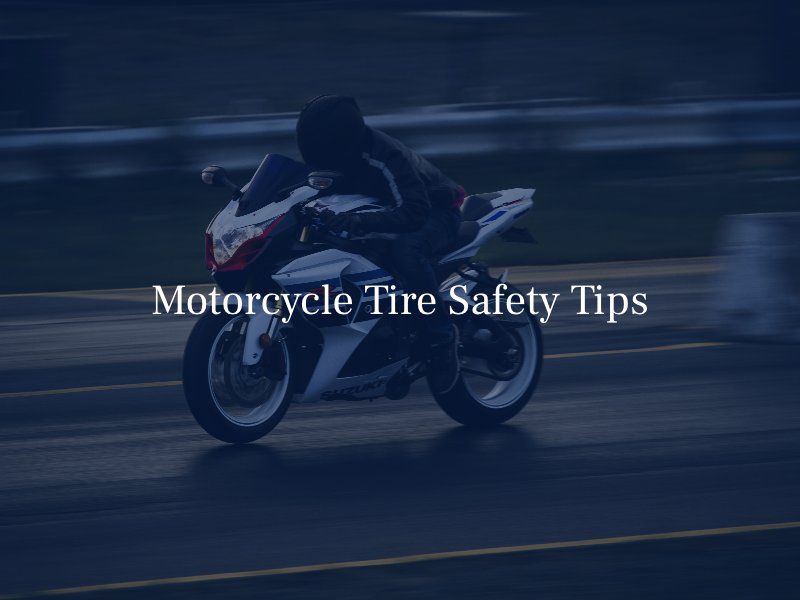Motorcycle Tire Safety Tips
December 27, 2022 Posted In Motorcycle Accidents
A critical part of ensuring that a motorcycle’s performance remains optimal is paying attention to its tires. Here are a few tips on tire safety to help you reduce the risk of tire failure that can lead to an accident.

Choose the Right Tire
When selecting motorcycle tires, ensure they meet your motorcycle manufacturer’s requirements and expected usage. In addition, do not use radial tires on bikes not designed for radial use. The wrong fitment of radial motorcycle tires can adversely affect handling and stability, which can cause an accident. Finally, keep in mind that new motorcycle tires are usually coated with a waxy type film from the curing process; therefore, they should not be ridden at maximum power or hard cornering until after approximately 100 miles.
Check Tire Pressure
Air pressure fluctuates slightly every month, but it can add up if enough time passes. Keeping an eye on tire pressure and, ideally, checking it before every ride is very beneficial. Under inflated tires contribute to accidents, poor performance, and decreased longevity.
Know When It is Time to Change Tires
Tires in poor condition can ruin a motorcycle’s performance and endanger your safety. It is recommended to do weekly inspections to check the state of the tires, depth of the treads, any damage due to impacts, or any sign of unusual wear. Change your tires if you see a puncture, the legal tread wear limit has been reached, or signs of aging (e.g., cracks or deformations). As a general rule, tires should be examined by a mechanic every year after five years of use.
Don’t Exceed a Tire’s Load Capacity
Never exceed your motorcycle tires’ maximum load or that of your motorcycle, which can be found in your motorcycle owner’s manual. Motorcycle trailers often cause of instability, exaggerated tire stress, and overload. Most motorcycle tire manufacturers do not warranty tires on motorcycles that pull trailers. If you pull a trailer, exercise extreme caution.
Tire Mounting and Balancing
It is essential to have new wheels and motorcycle tire assembly professionally balanced before reinstallation. Unbalanced motorcycle tires will vibrate and greatly accelerate tire wear. Additionally, improper mounting can cause tire explosion and serious injury or death.
Tire Repairs
Before repairing a tire, let your dealer or mechanic know if you used an aerosol fixer to inflate/seal the tire. Since aerosol fixers can contain a highly volatile gas, the valve core must be removed outdoors away from heat sources, and the tire completely deflated so the rim can be removed for repair.
- Tires with less than 1/32nd inch (0.8 millimeters) tread remaining should be replaced, not repaired.
- Tires with a puncture larger than 1/4 inch (6.4 millimeters) in diameter should not be repaired but replaced.
- Using plugs alone on any type of tire is not a safe repair.
- A tires with a puncture or other damage outside the tread area cannot be adequately repaired.
- Any tire repair done without removing the tire from the rim is improper.
- Tubes should not be a substitute for a proper repair.
In the first 24 hours after a repair, tires should not travel beyond 50 mph and should never be used at speeds above 80 mph. If you or a loved one in involved in a collision, our motorcycle accident lawyers in Riverside can help answer any questions you might have and guide you through the legal process.